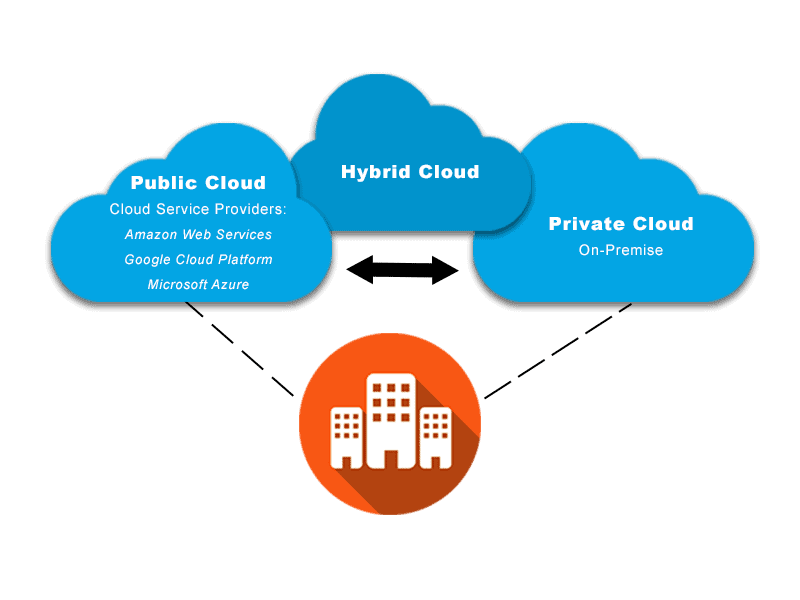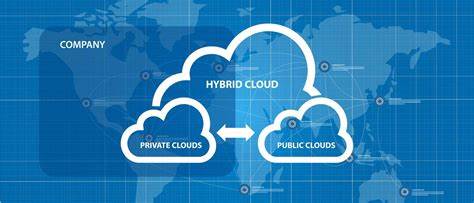
In today’s rapidly evolving digital landscape, businesses are increasingly shifting towards hybrid cloud solutions as they seek to modernize their IT infrastructure. Hybrid cloud technology, which integrates private and public cloud environments, offers a blend of flexibility, efficiency, and control. This article delves into the rise of hybrid cloud solutions, examining how they are transforming modern IT infrastructure and why they are becoming essential for businesses of all sizes.
Understanding Hybrid Cloud Solutions
Hybrid cloud solutions combine on-premises, private cloud infrastructure with public cloud services, allowing organizations to utilize a mix of both environments. This approach provides the flexibility to choose where to run workloads, store data, and manage applications, depending on their specific needs. The hybrid model enables businesses to benefit from the scalability and cost-effectiveness of public clouds while retaining control and security through private clouds.
Key Benefits of Hybrid Cloud Solutions
1. Enhanced Flexibility and Scalability
One of the most significant advantages of hybrid cloud solutions is their flexibility. Organizations can scale their IT resources up or down based on demand, using public clouds to handle peak loads and private clouds for sensitive data and critical applications. This elasticity helps businesses adapt to changing market conditions and business requirements with greater agility.
2. Cost Efficiency
Hybrid clouds offer a cost-effective solution by optimizing resource usage. Companies can leverage public cloud services to reduce the need for extensive on-premises hardware, thus cutting capital expenditures. By utilizing public clouds for non-critical tasks and private clouds for essential operations, businesses can balance costs while maximizing performance.
3. Improved Security and Compliance
While public clouds offer many benefits, some organizations may have concerns about data security and regulatory compliance. Hybrid cloud solutions address these concerns by allowing businesses to store sensitive information on private clouds while using public clouds for less critical data. This approach helps meet regulatory requirements and ensures that sensitive data remains secure.
4. Greater Control and Customization
Hybrid cloud solutions provide organizations with greater control over their IT infrastructure. Businesses can customize their private cloud environments to meet specific needs and requirements, while still taking advantage of the public cloud’s broad range of services and tools. This control helps companies optimize their IT operations and achieve better performance.
5. Enhanced Disaster Recovery and Business Continuity
Hybrid cloud environments offer robust disaster recovery and business continuity options. By replicating data and applications across both private and public clouds, businesses can ensure that their operations remain resilient in the face of disruptions. This redundancy minimizes downtime and helps organizations recover quickly from unexpected events.
Key Trends Driving the Adoption of Hybrid Cloud Solutions
1. Digital Transformation Initiatives
As businesses undergo digital transformation, they seek innovative solutions to modernize their IT infrastructure. Hybrid cloud solutions play a crucial role in this transformation by providing the agility and scalability needed to support new technologies and applications.
2. Increased Data Volumes
The exponential growth of data is driving organizations to adopt hybrid cloud solutions. With the ability to store large volumes of data in public clouds while maintaining critical data in private clouds, businesses can manage their data more effectively and efficiently.
3. Rising Demand for Remote Work Solutions
The rise of remote work has highlighted the need for flexible IT solutions. Hybrid cloud environments facilitate remote work by enabling employees to access applications and data from anywhere, while still ensuring that sensitive information remains secure.
4. Advancements in Cloud Technologies
Advancements in cloud technologies, such as containerization and microservices, are making hybrid cloud solutions more attractive. These technologies enhance the ability to deploy and manage applications across hybrid environments, driving further adoption.
5. Growing Focus on Sustainability
Organizations are increasingly prioritizing sustainability and environmental responsibility. Hybrid cloud solutions can help reduce the carbon footprint by optimizing resource usage and minimizing the need for on-premises hardware. Public cloud providers often operate energy-efficient data centers, contributing to overall sustainability goals.
Challenges and Considerations
1. Complexity in Management
Managing a hybrid cloud environment can be complex, requiring integration between private and public clouds. Businesses need to invest in tools and expertise to ensure seamless operation and integration across both environments.
2. Data Integration and Migration
Migrating data between private and public clouds can present challenges. Organizations must develop strategies for data integration and migration to ensure that data is transferred efficiently and securely.
3. Compliance and Security
Maintaining compliance and security across hybrid cloud environments requires careful planning and execution. Businesses must implement robust security measures and ensure that they meet regulatory requirements in both private and public cloud settings.
Conclusion
The rise of hybrid cloud solutions is transforming modern IT infrastructure by offering enhanced flexibility, cost efficiency, and control. As organizations continue to embrace digital transformation, hybrid cloud environments provide a strategic advantage by combining the benefits of private and public clouds. Despite the challenges, the adoption of hybrid cloud solutions is expected to grow as businesses seek to optimize their IT operations and meet evolving demands. By leveraging the strengths of both cloud environments, companies can achieve a more resilient, agile, and cost-effective IT infrastructure.










